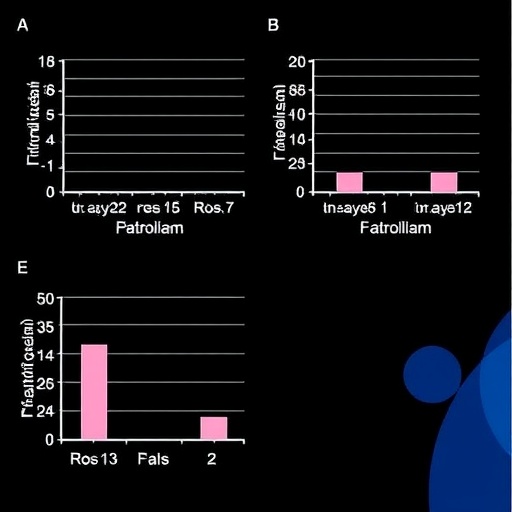In the intricate world of hematology, the role of erythropoietin (EPO) has long been established yet remains a critical component in understanding various hemoglobinopathies. Recent research by Amarasingha et al. sheds light on serum erythropoietin levels and their determinants in patients afflicted with hemoglobin E beta-thalassemia. This condition, prevalent primarily in Southeast Asia, presents a unique set of challenges for managing anemia and ensuring an adequate quality of life for affected individuals. By exploring the relationship between EPO and the clinical manifestations of this disorder, new avenues for targeted therapeutic strategies may emerge.
Erythropoietin, a glycoprotein hormone produced primarily by the kidneys, plays a pivotal role in the regulation of red blood cell production. Its primary function is to stimulate erythropoiesis in the bone marrow, a process that is crucial for maintaining adequate oxygen delivery to tissues throughout the body. In patients with hemoglobin E beta-thalassemia, understanding this relationship is especially critical, as anemia can significantly impair physical and cognitive functioning.
The researchers sought to quantify serum EPO levels in patients with hemoglobin E beta-thalassemia and identify the various factors that might influence these levels. Factors such as the severity of anemia, iron status, and other laboratory parameters were meticulously examined to investigate their correlations with EPO serum concentrations. This multifaceted approach allowed the researchers to develop a comprehensive understanding of erythropoiesis in this specific population.
Interestingly, the study revealed that patients with hemoglobin E beta-thalassemia exhibit a wide range of serum EPO levels, suggesting that individual physiological responses to anemia can vary significantly. Such variability highlights the complexity of anemia management in hemoglobinopathies. Clinicians must consider these individual differences when formulating treatment plans, particularly when deciding on interventions that involve erythropoiesis stimulation.
One of the factors influencing serum EPO levels in patients studied was the degree of anemia. As hemoglobin levels dropped, a compensatory increase in erythropoietin was observed. This response underscores the body’s innate mechanisms designed to maintain homeostasis even in the face of chronic health challenges. However, the effectiveness of this compensatory mechanism may be diminished in patients with more severe forms of beta-thalassemia, emphasizing the need for tailored therapeutic approaches.
Iron status also played a crucial role in determining serum EPO concentrations. In patients with hemoglobin E beta-thalassemia, iron deficiency can complicate the clinical picture. Anemia resulting from either hemolysis or impaired erythropoiesis can lead to multiple complications, yet iron deficiency exacerbates the situation by hindering effective hemoglobin synthesis. The study posits that monitoring and managing iron levels may be just as important as tracking erythropoietin in the overall care plan for patients with this condition.
Furthermore, the correlation between serum EPO and reticulocyte count, a measure of new red blood cell production, was explored. As reticulocyte counts increased, serum EPO levels also climbed, thereby reinforcing the theory that increased red cell turnover due to hemolysis or inadequate erythropoiesis could signal the kidneys to ramp up erythropoietin production. Understanding this relationship not only aids in the diagnosis of anemia types but also helps in evaluating the efficacy of treatment interventions.
The findings from Amarasingha et al. have important implications for the management of patients with hemoglobin E beta-thalassemia. Given the varied response of serum EPO to different clinical scenarios, clinicians might consider measuring EPO levels as part of a comprehensive assessment of anemia. This additional diagnostic tool could provide valuable insight into the underlying mechanisms at play, ensuring that patients receive optimized care based on their specific needs.
In a broader context, the study contributes to the ongoing dialogue about the management of thalassemia and related disorders. By providing a deeper understanding of serum erythropoietin dynamics, researchers and healthcare professionals can better address the myriad challenges associated with hemoglobin disorders. This is particularly relevant in the developing world, where hemoglobin E beta-thalassemia is endemic and poses significant public health challenges.
The implications extend beyond clinical practice; understanding EPO’s role could have far-reaching consequences in developing novel therapies aimed at modulating erythropoiesis. Researchers could explore pharmacological agents that mimic or enhance erythropoietin signaling, potentially providing new avenues for treating anemia in thalassemia patients who are unresponsive to conventional therapies.
As scientific inquiry continues to advance our understanding of hematological disorders, the role of erythropoietin remains a beacon of hope. The intricate interrelationships between EPO, iron status, anemia severity, and clinical outcomes form a tapestry that has yet to be fully unraveled. Future studies aiming to clarify these connections will not only enrich our scientific knowledge but also enhance patient care strategies.
Moving forward, it is vital that future research continues to build on these findings. Large-scale studies across diverse populations would provide more insights into serum EPO variations and their clinical implications. By fostering a collaborative approach among researchers, clinicians, and patient advocacy organizations, the global research community can facilitate the development of more effective interventions for hemoglobin E beta-thalassemia, ultimately improving patient outcomes and quality of life.
In summary, serum erythropoietin serves as a crucial link in managing hemoglobin E beta-thalassemia, with its levels impacted by various determinants that warrant meticulous evaluation. As our understanding of this relationship deepens, the potential for innovative treatment approaches grows. This study by Amarasingha et al. can be seen as a significant step towards tailoring management strategies that are informed by the specific hematological parameters of affected individuals, ultimately leading to better healthcare outcomes for those grappling with this complex disorder.
Subject of Research: Serum erythropoietin and its determinants in patients with hemoglobin E beta-thalassemia.
Article Title: Serum erythropoietin and its determinants and associations in patients with haemoglobin E β-thalassaemia.
Article References:
Amarasingha, D., Perera, S., Premawardhena, A. et al. Serum erythropoietin and its determinants and associations in patients with haemoglobin E β-thalassaemia.
Sci Rep 15, 37142 (2025). https://doi.org/10.1038/s41598-025-21010-9
Image Credits: AI Generated
DOI: 10.1038/s41598-025-21010-9
Keywords: Erythropoietin, Hemoglobin E beta-thalassemia, Anemia, Serum levels, Iron status, Erythropoiesis.




